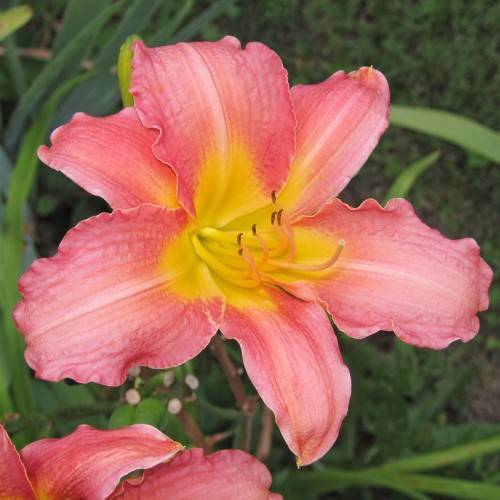
daylily
Hemerocallis 'China Bride'
Cycle:
Herbaceous Perennial
Watering:
Average
Hardiness Zone:
3 - 9
Flowers:
Flowers
Sun:
Full sun,part shade
Leaf:
Yes
Growth Rate:
High
Maintenance:
Low
Drought Tolerant:
Yes
Salt Tolerant:
Yes
Care Level:
Medium
watering
Daylilies require moist but well-drained soil and should be watered about once or twice a week, depending on the weather. During periods of extreme heat and drought, the plants may require additionalan water. When watering, water until the soil is evenly moist and water until you see it coming out of the pot's drainage holes. Avoid over-watering as this can cause root diseases and root rot. Daylilies do not require a lot of fertilization. A light fertilizer application once in spring is usually sufficient to promote healthy plant growth and blooming.
sunlight
Daylily (Hemerocallis ‘China Bride’) can thrive in full sun to part shade. For optimal plant health, providing at least 6 hours of direct sunlight per day is recommended. This will help promote strong stem growth, healthy leaves, and abundant blooms. During the heat of the summer, offering some protection such as a light shade cloth to keep your plant from overexposure. Additionally, always remember to water daylilies thoroughly, so that they can receive the best possible care.
pruning
Daylilies, like many other perennial plants, benefit from regular pruning. The best time to prune China Bride daylilies, or any other daylily variety, is in late winter or early spring, before new growth appears. Start by removing any damaged or dead foliage with sharp, clean shears or scissors. This should be done first to ensure that subsequent pruning is done on healthy tissue. Then, do some light pruning around the base of the plant to remove any rogue foliage. Prune it down to approx. 6" above the ground. Once you have done the basic pruning described above, you can move on to shaping. If required, use pruning shears to thin out congested or overgrown clumps of foliage. This will help to improve air circulation and promote new growth. To shape the daylily, cut the foliage to a uniform height and pull it in closer to the middle of the plant. Finally, cut off the seed heads of any flowers that have died back. This will not only keep the plant looking healthy and neat, but will also prevent daylilies from reseeding in your yard. In summary, for the best results with daylilies, prune in late winter or early spring, before new growth appears. Remove any damaged or dead foliage with sharp, clean shears or scissors. Then, use pruning shears to thin out congested and overgrown foliage. Finally, snip off seed heads of any flowers that have died back.
